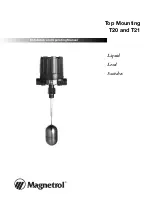
Command Manual – Routing Protocol
Quidway S3900 Series Ethernet Switches-Release 1510
Chapter 3 OSPF Configuration Commands
Huawei Technologies Proprietary
3-43
[Quidway] interface Vlan-interface 3
[Quidway-Vlan-interface3] ospf mtu-enable
3.1.39 ospf network-type
Syntax
ospf network-type
{
broadcast
|
nbma
|
p2mp
|
p2p
}
undo ospf network-type
View
Interface view
Parameter
broadcast
: Changes the interface network type to broadcast.
nbma
: Changes the interface network type to NBMA.
p2mp
: Changes the interface network type to point-to-multipoint.
p2p
: Changes the interface network type to point-to-point.
Description
Use the
ospf network-type
command to configure the network type of OSPF interface.
Use the
undo ospf network-type
command to restore the default network type of the
OSPF interface.
OSPF divides networks into four types based on link layer protocol:
z
Broadcast: If Ethernet or FDDI is adopted, OSPF defaults the network type to
broadcast.
z
Non-Broadcast Multi-access (
nbma
): If Frame Relay, ATM, HDLC or X.25 is
adopted, OSPF defaults the network type to NBMA.
z
Point-to-Multipoint (
p2mp
): OSPF will not default the network type of any link layer
protocol to
p2mp
. The general undertaking is to change a partially connected
NBMA network to
p2mp
network if the NBMA network is not fully-meshed.
z
Point-to-point (
p2p
): If PPP, LAPB or POS is adopted, OSPF defaults the network
type to
p2p
.
If there is any router not supporting multicast addresses on a broadcast network, the
network type of the interface can be changed to NBMA. Alternatively, the network type
of the interface can be changed from NBMA to broadcast.
For a non-broadcast multi-accessible network to be of NBMA type, any two routers in
the network must be directly reachable to each other through a virtual circuit. In other
words, the network must be fully-meshed.
For a network not meeting this condition, the network type of the interface must be
changed to point-to-multipoint. In this way, routing information can be exchanged
















































